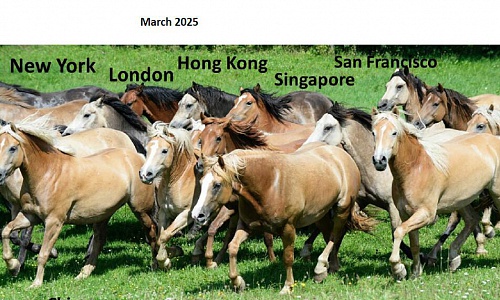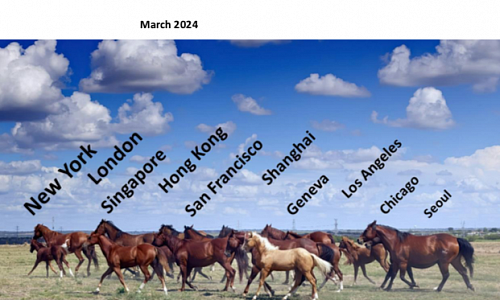
Insights

Date: August 27, 2024
Author: Mr. MING Liang, Research Fellow, Institute of Urbanization, CDI
In 2024, the Chinese AAA game Black Myth: Wukong debuted spectacularly, swiftly becoming a trending topic and a "top influencer." Inspired by the Chinese literary classic Journey to the West, this game has indeed created a “black myth,” achieving dual success in both critical acclaim and sales. The wide-ranging discussions it has sparked primarily revolve around the following three aspects:
1.Black Myth: Wukong Sets a Benchmark for High-Quality AAA Games in China
Domestic developers rarely ventured into AAA game territory owing to high costs, lengthy development cycles, and competitive threats. The launch of Black Myth: Wukong has altered this landscape. The game has gained widespread acclaim from players both domestically and internationally due to its top-notch character design, narrative structure, special effects, scene rendering, and voice acting. It has not only dominated sales charts in many countries and regions but has also become the first Chinese game to break into Steam’s top ten concurrent player rankings, ushering in a new era for China's gaming industry in the international arena.
2.Black Myth: Wukong’s Creative Team Embodies Both Idealism and Pragmatism
This monumental game was not created by a major corporation but rather the culmination of six years of dedicated effort by a small-to-medium tech company. The team balanced their aspiration to develop high-quality single-player games with the need for financial stability, which was provided by revenue from mobile game ventures. They achieved collaborative synergy by forming project teams in both the Guangdong-Hongkong-Macao Greater Bay Area and the Yangtze River Delta, bringing “Wukong’s black myth” to life.
3.Black Myth: Wukong Offers Fresh Perspectives on the Next Wave of “Cultural Export”
Video games are not just cultural carriers but also powerful channels for dissemination. The creators of Black Myth: Wukong seamlessly blended the “81 tribulations” from Journey to the West into the gameplay while digitally reconstructing 31 iconic landmarks from 12 provinces and cities across China with meticulous 1:1 accuracy. These endeavors vividly showcase the charm of traditional Chinese landscapes and the elegance of Oriental aesthetics, offering international players a rich and immersive experience of Chinese culture that transcends the story.
Beyond its Achievements: Reflections and Lessons
1.International Competition in Gaming is a Grueling Long Game
Similar to Wukong’s journey through the “81 tribulations,” the gaming industry demands constant innovation and refinement to maintain player engagement and loyalty. The game has achieved a remarkable debut, but the road ahead is challenging. Competing with global frontrunners requires extraordinary creativity, substantial investment, and continuous product optimization with operational excellence. While the game’s creators have received significant acclaim, they have also acknowledged criticisms, indicating areas for improvement. The considerable scrutiny and lofty expectations associated with the game serve as a “Sword of Damocles” over the team, signifying that this is only the “first level” of their journey. Many more “demons and monsters” lie in wait, making the journey ahead as arduous as it is promising.
2.Games, as a Vital Component of “Cultural Export,” Must Work in Tandem with Other Channels
As a blend of technology and creativity, Black Myth: Wukong offers a visually and audibly compelling introduction to Chinese culture. However, it still falls short of promoting regular and effective cross-cultural interactions. From the perspective of international communication practices, “cultural export” is a long-term, systematic endeavor that necessitates leveraging various cultural carriers and channels to establish a massive, effective matrix. Among these, the popularity of learning Chinese as a second language serves as a key indicator. As global interest in Chinese cultural symbols grows, the emergence of Chinese language education as a trend will be crucial in this new wave of “cultural export.” Nevertheless, “cultural export” has already set sail; the journey westward is poised to reach its destination.
3.Social Attributes of Games Call for a Balance of Multiple Factors
As a form of entertainment that encourages emotional and psychological engagement, video games not only generate substantial economic and commercial value but are also inherently constrained by laws, policies, cultural traditions, and ethical norms of different countries. As a unique cultural industry, the gaming sector has its own strengths and shortcomings. Policymakers should refrain from both excessive suppression and short-sighted “rush tactics.” Instead, they must strike an optimal balance between economic, social, and cultural dimensions.

Date: September 13, 2024
Author: Dr. LIU Jie, Senior Research Fellow at CDI
In 2021, China transitioned to a moderately aging society, with the aging process set to accelerate, posing increasing challenges to healthcare and elderly care. The rapid aging phenomenon is marked by three key features:
- Trend: China’s aging population is poised to join the “fast lane.”
- Structure: The proportion of the very elderly population is steadily increasing.
- Features: Issues related to chronic diseases and disabled older adults are becoming more pronounced.
The China Population Aging Development Trend Forecast Report indicates that China will reach critical milestones in the acceleration of aging between 2035 and 2050, with the older adult population projected to peak in 2053. From 2021 to 2035, the older adult population is expected to increase from 300 million to 400 million, representing an accelerated growth rate. Simultaneously, the proportion of extremely old individuals (aged 80 and above) will continue to climb, accompanied by a sharp increase in the number of individuals with chronic conditions and disabilities.
Establishing a suitable integrated healthcare and elderly care service system has emerged as an urgent priority.
Insufficient Supply: Several integrated care models are still in their nascent stages. Nationwide, only 7,800 qualified institutions provide a total of 2 million beds, significantly insufficient to meet the massive demand. Rehabilitation hospitals and elderly care facilities often possess insufficient medical capabilities, and the medical support for home-based and community care is also inadequate.
Healthcare Payment Gaps: Existing medical payment systems fail to effectively support long-term hospitalization and rehabilitation for older adults, resulting in frequent transfers between facilities or significant out-of-pocket expenses.
Family Care Burden: The caregiving burden for families of disabled and cognitively impaired older adults is increasing annually. With the increase in the aging population and the decline in birth rates, many families struggle with the exorbitant costs of professional care.
Limited Long-Term Care Insurance Coverage: Although the number of pilot cities for long-term care insurance has expanded to 49, only approximately 1.34 million individuals get coverage, falling far short of the demand for disability care.
Addressing these challenges necessitates the development of a robust integrated healthcare and elderly care system.
1.Expand Integrated Healthcare and Elderly Care Services
To address the dual needs of healthcare and elderly care, resources must be coordinated to provide services tailored to demand, encompassing disease treatment, chronic disease management, postoperative rehabilitation, and long-term care. This entails:
Encouraging underutilized hospitals and medical institutions to transition into integrated care providers.
Implementing healthcare reimbursement policies in eligible elderly care facilities and promoting the development of medical services within these institutions.
Enhancing home-based and community care by augmenting the medical capabilities of community health centers, expanding the availability of family beds, and gradually strengthening the capacity of primary healthcare institutions to deliver in-home services for older adults.
2.Transition Secondary and Lower-Tier Hospitals to Integrated Care Facilities
Only 10% of hospitals in China are tertiary-level facilities, while secondary and lower-tier hospitals often struggle with operational difficulties and fail to meet the treatment, rehabilitation, and care needs of an aging society. Transforming these hospitals into integrated healthcare and elderly care facilities is essential. A referral mechanism should be implemented, enabling treatment-oriented hospitals to transition patients to rehabilitation hospitals, integrated care facilities, or elderly care institutions as part of a tiered medical system.
3.Achieve Universal Coverage of Long-Term Care Insurance
The coverage of social security-based long-term care insurance must be expanded, together with improvements in funding mechanisms and benefit guarantees, to ensure a government safety net. Additionally, commercial insurance companies should be encouraged to participate in pilot programs by offering personalized long-term care insurance products with tax incentives for buyers. By integrating insurance with care services, commercial insurers can help enhance the development of the care service system.
4.Expand Hospice Care Pilot Programs
Efforts should be undertaken to increase the number of hospice care facilities and strengthen the training of relevant medical staff. A bed-day payment model combining healthcare reimbursement and personal contributions should be investigated to meet the needs of terminally ill patients.
With the acceleration of China’s aging society, the integration of healthcare and elderly care will be vital in addressing the challenges posed by population aging to safeguard the well-being of older adults.

Date: September 15, 2024
Author: Dr. CAO Zhongxiong, Assistant President of CDI, and the Director of the Digital Strategy and Economic Research Center
China's platform economy has evolved through distinct stages, transitioning from unchecked growth to a phase of well-regulated governance and innovative development. Over time, this process has cultivated a group of leading platform enterprises. The last three years have been pivotal, signifying a period of significant transformation. Initially driven by the rapid rise of the "Internet Plus" initiative, platform enterprises expanded into traditional industries, often being equated with e-commerce companies by the public. However, as digital technology increasingly integrates with the real economy, platform enterprises are now venturing into emerging fields such as technological innovation, driving their businesses to new depths.
Consider Alibaba as a prime example. In the last three years, the company has significantly increased its investment in areas such as AI-driven large language models. Its proprietary “Tongyi” model has secured a leading position in the global open-source large-model landscape. Alibaba has also facilitated the development of next-generation models by leveraging its own computational power and technical capabilities. This evolution demonstrates a shift: platform enterprises are no longer merely commercial entities but are increasingly positioning themselves as digital enterprises. As pioneers of the digital economy, platform enterprises are leveraging digital technologies to drive supply-side reform, stimulate consumption, streamline supply chains, promote dual circulation (domestic and international), and foster flexible employment, transforming themselves into comprehensive integrators of digital technology application and advancement.
Although Alibaba’s journey began in e-commerce, it has progressively evolved into a frontrunner in China’s technological innovation. Amid a global wave of advancements, the company has achieved breakthroughs in operating systems and cloud computing, integrating innovation into its operations to enhance technological independence and resilience. Consequently, platform enterprises are now not only key players in commerce but also essential engines of technological progress.
China’s platform economy has now embarked on a new stage of development, necessitating a balance between effective regulation and the promotion of growth for its advancement.
Looking Ahead: The Expanded Role of China’s Platform Economy
1.Platform Enterprises as Leaders in Technological Innovation
China’s emphasis on technology has reached unprecedented heights. For platform enterprises, innovation is not only about their own advancement but also about enabling collaborative innovation across industries and ecosystems—a critical component of their "new journey." New technologies, especially in artificial intelligence, are advancing rapidly. Platform enterprises are uniquely positioned to provide the computational power and infrastructure essential to enhancing the feasibility, scalability, and economic viability of innovation. As major tech companies, they possess resource allocation capabilities, robust R&D capacities, and deep talent reserves, allowing for sustained investment in technological innovation and effective risk management.
2.Platform Enterprises as Catalysts for Emerging Productive Forces
The platform economy, as a novel economic model, is closely aligned with the national objective of fostering new productive forces. Market regulators expect platform enterprises to leverage technological innovation to drive industrial upgrades and assume a greater role based on their transformative outcomes. These enterprises are positioned at the forefront of the market, with profound insights into market demands, industry dynamics, and technological applications. They can overcome traditional constraints of time and space by aggregating, circulating, and sharing innovation resources online, promoting technological advancements across upstream and downstream industries. By empowering ecosystem partners, platform enterprises can stimulate the development of emerging industries and consistently contribute to new productive forces—which is a core responsibility and crucial in the digital economy ecosystem.
3.Platform Enterprises as Exemplars of Fair Competition
Compliance and maintenance of fair competition are crucial for sustainable development, whether achieved through the internal ecosystem or their external role as core players in the digital economy. At this new starting point, platform enterprises must continually strengthen their awareness of fair competition and improve their compliance capabilities. This not only facilitates their own growth but also establishes an industry benchmark. By optimizing the business environment and fostering fair competition, platform enterprises demonstrate a strong sense of social responsibility and commitment.
Navigating Challenges in a Rapidly Evolving Landscape
The accelerated advancement of digital technologies and the transformation of industries and ecosystems are propelling the global economy forward, fueled by computational power. However, technologically advanced nations often create "technology barriers" and "ecosystem barriers," hindering latecomers from catching up. As technological gaps widen, the challenges of addressing them increase exponentially.
China's platform enterprises have a solid foundation characterized by internationally competitive companies and the “scenario advantage” enabled by a unified, large-scale domestic market. Leading firms such as Alibaba have become critical infrastructure and technological platforms for national innovation. Fully developing the platform economy and harnessing the innovation capacity of platform enterprises will revitalize Chinese modernization and facilitate high-quality development.

Author: Dr. LI Enhan, Deputy Director of Token Digital Economy Research Center, CDI
Editor’s note: In the wave of global digitalization and intelligence, AI's role in artistic creation is challenging the foundations of copyright law. Questions about the originality of AI works, their copyright ownership, and the criteria for infringement are now at the forefront for legal experts. Against this backdrop, China and the United States, as major global players, are navigating the uncharted waters of AI and copyright with their distinct legal practices likely to shape international norms.
The growth of artificial intelligence (AI) requires a redefinition of traditional copyright concepts, including authorship, originality, and the attribution of rights and liabilities associated with infringement. While AI creations increase in complexity, the consensus finds that AI should not be granted authorship, as copyright is intended for human creations. However, with technological advancements and increasingly diversified creative forms, this position may encounter greater challenges and debates.
In the U.S., copyright law insists on a conservative approach and stipulates that human authorship is essential for copyright eligibility. This was evident in the case of "A Recent Entrance to Paradise," in which the court clearly stated that the prerequisite for copyright protection is "human authorship," thereby denying copyright registration for AI-generated pieces (Mathur, 2023). The U.S. demands significant human creativity in a work to deem it copyrightable, thus often excluding AI-generated works from copyright protections.
China, in contrast, demonstrates greater flexibility. When assessing AI-generated works, Chinese courts consider both the originality and the degree of human involvement and tend to judge whether works reflect human intellectual input and individuality. In the "Dreamwriter" case, the People's Court of Nanshan District in Shenzhen handed down a judgment in favor of the plaintiff Tencent. It recognized its AI-generated article on stock analysis as eligible for copyright since the article’s structure aligned with the format of the opinion piece and consisted of specific creative choices (Xiao, 2020).
These contrasting standards could lead to diverse future effects. The stringent option might limit the number of AI works eligible for copyright protection, affecting the innovation incentives of AI-related enterprises and individuals. In contrast, an open recognition approach could encourage AI creativity and foster synergy between AI technology and cultural industries. Yet, the latter may also encounter greater AI copyright dispute resolution challenges, necessitating a more nuanced framework for AI copyright recognition.
Furthermore, the conservative leaning of the U.S. may bolster traditional human creative processes and underscore humans' central role in art and culture. Meanwhile, China's flexible recognition could stimulate new forms of artistic and cultural expression. As AI creations may soon become integral to Chinese culture and art, China must prepare its cultural and art industries for the digital impact, addressing concerns such as the diminishing motivation among traditional artists and competitive pressures from AI-generated content in the market.
AI technology is now pushing copyright law into a new era. The contrasting perspectives and practices of China and the United States related to AI copyright reflect different interpretations of human creativity and hint at the future of global copyright law. The challenge for future lawmakers and practitioners will be in reconciling the enduring principles of copyright with the pace of technological innovation.
Reference:
Mathur, A. (2023, Dec 11). Case Review: Thaler v. Perlmutter (2023). Retrieved from Center for Art Law: https://itsartlaw.org/2023/12/11/case-summary-and-review-thaler-v-perlmutter/#post-61801-footnote-ref-0
Xiao, B. (2020, Mar 19). Shenzhen concludes first AI-generated article dispute case [深圳审结首例人工智能生成文章作品纠纷案]. Retrieved from People's Court Daily: http://oldrmfyb.183read.cc/paper/html/2020-03/19/content_166241.htm

Author: Fan Gang, President of CDI and Cao Zhongxiong, Assistant President of CDI.
As a special economic zone and a city blossoming on science and technology, Shenzhen, in South China’s Guangdong Province, is not only an economic front-runner, but also a great “mirror” illustrating China’s quick pace of technology innovation and economic development.
The development of Shenzhen has been subject to questioning on many occasions in the past decades, but the city has always responded by ironing out the doubts through its rapid development in both headwinds and tailwinds.
Shenzhen represents new quality productive forces, new systems, as well as birth of new and creative policies. It is the best window to observe the transformation of China’s economic development. A more in-depth examination of Shenzhen’s economic growth can offer proof of the stable and high-quality development of China.
Shenzhen’s rapid rise demonstrates the strength of China’s ability to achieve quality breakthroughs in its economic development, reinforcing public confidence in the country’s economic creativity and capability.
Despite the challenges posed by the lackluster global economy and an increasingly complex and uncertain world environment, China’s economy managed to achieve 5.2 percent growth in 2023. During the same period, Shenzhen’s local GDP reached 3.46 trillion yuan ($480 billion), representing a 6 percent year-on-year increase, ranking first among the first-tier cities in China, outpacing the growth of Beijing, Shanghai and Guangzhou.
In 2023, Shenzhen’s strong retail sector has become a major new driving force for economic growth. Total retail sales of consumer goods reached 1.05 trillion yuan last year, an increase of 7.8 percent over 2022, officially entering the club of Chinese cities with one-trillion-yuan consumption.
From the perspective of industrial structure, Shenzhen regards the development of strategic emerging industries and the cultivation of future industries as important levers to accelerate the formation of new quality productive forces, and coordinates the construction of industrial clusters with advanced manufacturing as its backbone.
By 2023, the strategic emerging industries in Shenzhen have achieved an added value of 1.45 trillion yuan, accounting for 41.9 percent of the city’s GDP, with a year-on-year growth of 8.8 percent. In terms of the emerging industries, Shenzhen dares to make forward-looking layouts in cutting-edge technology innovation.
New technologies are broadly utilized in Shenzhen, helping form new industries in China. Shenzhen-headquartered company BGI Genomics has been leading in the global genetic technology field. Tencent, a Fortune Global 500 company, has played a significant role in promoting the development of China’s digital economy. DJI has gone from Shenzhen to the global market, promoting the development and growth of China’s drone industry.
The sustained economic growth of Shenzhen highlights the significant potential of China’s economy, reflecting the promising prospects for continued growth and ongoing improvement in China’s future development.
Innovation is the primary driving force behind Shenzhen’s rise, serving as the lifeblood of the city. Innovation is a defining characteristic of Shenzhen, playing a vital role in its development. Similarly, innovation is essential for the progress of China’s overall economy. More emphasis should be put on technological innovation on the national level, fostering new quality productive forces.
Eyeing high-quality development, Shenzhen is making great efforts to construct an industrial technology innovation center, playing the role of the leading incubator for Chinese technological advancement, and serving China’s future development.
Now, China has a number of emerging technology-heavy cities with development advantages such as Dongguan in South China’s Guangdong Province, Suzhou in East China’s Jiangsu Province, and Qingdao in East China’s Shandong Province. These cities are actively supporting technological innovation, the growth of private sector, and the cultivation of new quality productive forces, which will further stimulate the vitality and momentum of China’s development.
China’s economy is experiencing a period of steady recovery and a structural adjustment, with sufficient potential for endogenous dynamism and a large room for continued growth. As long as China focuses on solving all the problems in the course of its development, adheres to openness and high-value innovation, and continuously develops new quality productive forces, there is no reason why the Chinese economy will “peak” any time soon.

Author: Cao Zhongxiong, Assistant President of CDI.
Despite the challenges posed by the lackluster global economy and an increasingly complex, severe, and uncertain external environment, China’s economy managed to achieve 5.2 percent growth in 2023. This growth contributed over 30 percent to global economic growth, solidifying China’s role as a crucial engine for global economic expansion. China’s economy, which is pushing over risks and challenges, has maintained steady growth in terms of quantity and scale.
In the face of multiple challenges, China successfully exceeded its annual growth target of around 5 percent set by the Government Work Report for 2023, further enhancing its status as one of the world’s top economies. In comparison with other major economies, China’s growth outpaced the 2.5 percent of the US, the 0.5 percent of the EU, and the 1.9 percent of Japan.
Economic development should not only be assessed based on quantity, but also on the quality of structural improvements. China’s high-tech industries are at the forefront of driving economic growth. In 2023, investment in technological transformation of manufacturing increased by 3.8 percent compared with the previous year, leading to a rise in the proportion of high-tech manufacturing to 15.7 percent and equipment manufacturing to 33.6 percent in the value-added industrial output.
China has maintained the fastest growth in the world ten or twenty years ago. The world has been accustomed to China’s fast growth, thinking that only fast growth is natural for China. However, it should be recognized that the Chinese economy has long surpassed the threshold of 100 trillion yuan, which is the sum of Germany, Japan, India, the UK, and Italy. Entering a new stage of high-level and high-quality development, for the 100 trillion yuan-level Chinese economy, simply observing growth rate is one-sided and biased.
Currently, the giant ship of China’s economy needs to cruise at a steady pace. Its growth rate, whether too fast or too slow, is not conducive to high-quality economic development. Issues such as insufficient consumption momentum, debt risks in the real estate sector, and hidden debts at the local level still exist.
Overall, the favorable conditions for China’s development are stronger than the unfavorable factors. The basic trend of economic recovery and improvement will not change over the long term, combined with the confidence and determination for China’s development which will remain into the future. In the current transition from old to new driving forces, stability is particularly important.
Although the current global situation is constantly changing and factors that are not conducive to globalization and economic growth are increasing, China still insists on new levels of development. This has always been China’s commitment to the world’s development.
China is actively exploring in the fields of technological innovation, development of private economy, and cultivation of new quality productive forces, which will stimulate the vitality and momentum of China’s development. The Chinese economy is in a period of steady recovery and key structural adjustment. With ample potential for continued growth, the economy is not “peaking” as Western media hyped.
To observe China’s economic growth and high-quality development, one needs to look at it with a developmental perspective. China is a super large single market, and urbanization is still in progress. China has a complete industrial chain and supply chain system, and has crossed the critical point of mid-term industrialization development. Looking across the world, there are hardly any other major countries that simultaneously meet these features. In this sense, for a considerable period of time in the future, China’s crucial role in the world economy will not be replaced.

Date: Dec 7, 2023
Authors: XIE Laifeng1, TAN Huifang2, ZHUANG Zhuohao3, and MO Dilang3
Due to the unique “One Country, Two Systems” framework, institutional innovation that facilitates the free flow of production factors strengthens inter-governmental cooperation and promotes the cooperative development of the economy and industries has become key to advancing the construction of the Guangdong–Hong Kong–Macao Greater Bay Area (GBA). Within the GBA, Guangzhou and Hong Kong’s success in cross-border equine industry cooperation has been empowered by the two cities’ continuous exploration of institutional innovation. This article systematically examines their experiences and presents policy improvement suggestions based on the future development needs of the cross-border equine industry.
In support of the equestrian events of the Guangzhou 2010 Asian Games, the construction of the equestrian venue and the establishment of the country’s first equine disease-free zone (EDFZ), which was certified by the World Organisation for Animal Health and the European Union, was completed in Conghua District, Guangzhou. Following the Asian Games, to maximize the usage of existing resources and facilities, the Guangzhou municipal government introduced the Hong Kong Jockey Club (HKJC) to Conghua, which later converted the equestrian venue into the Conghua Racecourse. In August 2018, The HKJC Conghua Racecourse officially opened for operation, becoming Mainland's first racecourse and thoroughbred horse training center to meet international standards. As the equine industry cooperation between Guangzhou and Hong Kong deepened, the two cities signed the Co-operation Agreement between Guangdong and Hong Kong on Equine Industry Development in May 2021, and since have steadily advanced major projects such as an international horse-trading platform and international equestrian sports events.
After examining the cooperation process within the Guangzhou–Hong Kong equine industry, it became evident that amidst the development of the GBA, some of the regulatory measures presented challenges that hindered the cross-border flow of production factors between Hong Kong and the Mainland which was fundamental for further industrial development. Therefore, governmental-level institutional innovation became imperative. The institutional innovation in the Guangdong–Hong Kong equine industry cooperation is illustrated in the following four areas.
First, regarding government cooperation mechanisms, designated task force and leadership groups were created. The Guangdong–Hong Kong Equine Industry Cooperation Task Force, established under the Hong Kong/Guangdong Co-operation Joint Conference mechanism, can collaboratively plan the coordinated development of the equine industry in the GBA at a higher level and serve as an important medium in addressing challenges that emerged during the development process in a targeted manner. Additionally, the task force promotes exchanges among relevant enterprises, institutions, and personnel between the two locations. Guided by the task force, Guangzhou and Conghua have each established leadership groups for the equine industry, collaboratively advancing the implementation of various initiatives for the development of the Guangzhou–Hong Kong equine industry.
Second, in terms of customs clearance, the introduction of the “one-time approval, multiple round trips” registration and filing system, which allows horses multiple entries and exits to Guangzhou during a validity period, has created a new model for cross-border horse transportation within the GBA. Furthermore, the exchange of horses between the two locations is safeguarded by the establishment of unified inspection standards and a recognition mechanism for inspection and quarantine testing results. Lastly, Guangzhou Customs has established a dedicated office at the Conghua Racecourse to implement biosecurity surveillance and controls to guarantee the security of the EDFZ and cross-border horse transportation.
Third, the collaborative effort of Hong Kong’s Agriculture, Fisheries and Conservation Department and mainland authorities, including Customs, Ministry of Agriculture and Rural Affairs, and provincial, municipal, and district governments, was fundamental to the pioneering establishment of an EDFZ that spans the entire Conghua District and the innovative inclusion of a biosafety highway that enables the direct transfer of horses between Conghua and Hong Kong.
Fourth, the Guangzhou municipal government has delegated foreigner visa issuance to Conghua, allowing foreign employees of HKJC to apply for visas nearby. With the assistance of the Guangzhou Municipality, the children of non-Guangzhou Hukou talents employed by the HKJC who meet the prescribed conditions can enroll with their nearest compulsory education provider without taking entrance exams.
The equine industry cooperation between Guangzhou and Hong Kong has yielded fruitful results; however, to maximize cooperation in the cross-border equine industry chain, both Guangzhou and Hong Kong must continue to explore more substantial institutional innovations.
Firstly, increased facilitation to smooth the movement of horses and clearance of associated goods is needed. Examples include streamlining the clearance process, establishing a normalized emergency response mechanism, and establishing dedicated control stations at both the origin and destination points of cross-border horse transportation routes.
Secondly, to facilitate the international horse-trading platform and international equestrian events, proactive policy arrangements should be made so registered foreign veterinarians can provide veterinary services in Guangzhou and Conghua.
Thirdly, further research into creating a mechanism that promotes international mutual recognition of inspection and quarantine findings is needed to allow foreign horses to transit the Conghua EDFZ which is critical for hosting international equestrian events.
Lastly, introducing and nurturing talent in the equine industry is vital. It is recommended that to strengthen talent training in the equine industry further, support be provided to relevant universities to build faculties focused on the modern equine industry. Additionally, the facilitation of HKJC’s foreign employees working and living in Guangzhou should be continued, professional qualifications recognition be supported, and industry professionals be enabled to enjoy preferential personal income tax policies within the GBA.
---------------------------
- Deputy Director, Department of Hong Kong, Macao and Regional Development, CDI
- Lecturer, School of Economics and Management, Xiangnan University
- Project Research Fellow, Department of Hong Kong, Macao and Regional Development, CDI
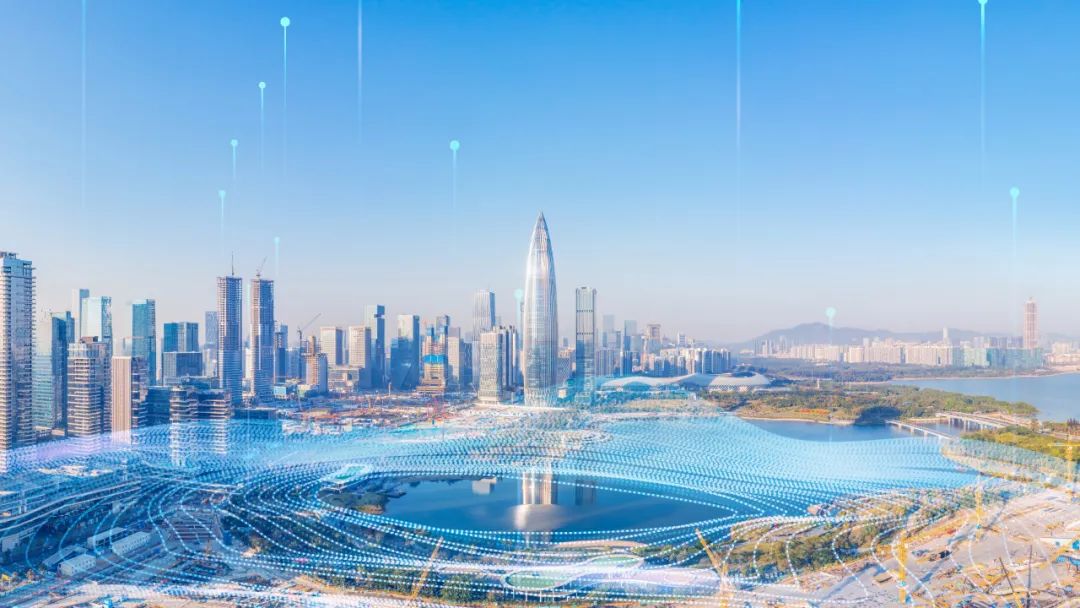
Date: August 21, 2023
Author: Dr. LI Enhan and Ms. ZHUO Shengling, China Token Digital Economic Research Center, CDI
When discussing the rapid advancement of artificial intelligence, it undoubtedly marks the dawn of a new era in technology. It is set to become a key force driving a new wave of technological revolution and industrial transformation. Shenzhen has released a corresponding action plan and the initial roster of "City + AI" application scenarios, while also establishing a substantial 100 billion CNY fund dedicated to artificial intelligence.
Overview of the global competition in artificial intelligence
On a global scale, the competition in artificial intelligence has become a pivotal area where countries vie for dominance. Leading technological powers like the United States, the European Union, and China continue to intensify their investments and strategic positioning in the AI domain.
The United States stands out for its strategic leadership, substantial capital support, and technological edge. Consistently investing in policies and research in AI, it aims to retain its global leadership. In recent years, the U.S. has introduced a series of significant policy documents, emphasizing funding particularly in technological applications in national defense.
The European Union prioritizes safeguarding fundamental rights and leads the way in establishing regulatory frameworks for artificial intelligence. Its focus lies in preventing technological development from potential erosion of human rights, exploring the establishment of a regulatory system, and ensuring the safety of artificial intelligence technology and applications within the EU. Additionally, Europe holds significant advantages in applying AI technology to manufacturing and industrial automation.
With abundant data resources, robust technological foundations, and strong policy support, China's AI industry thrives, unveiling innovative application scenarios continuously. China has also shifted its policy focus from industrial development towards technological regulation and governance, emphasizing the balance between technological oversight and industrial growth. Moreover, it actively publishes ethical guidelines and policy documents to ensure that the advancement of artificial intelligence does not compromise national security or societal order.
The development of the artificial intelligence industry in China’s major cities
Major cities in China are actively exploring various initiatives to become leaders in global AI development, each following its unique development path.
Beijing, leveraging its vast talent pool, outstanding technical prowess, and innovative atmosphere, has issued multiple policies to encourage the development of the AI industry, striving to build itself as an innovation hub for AI.
Shanghai, with a primary advantage in application-driven innovation, extensively applies AI technology across economic, societal, and governance domains within its digital transformation efforts, and strives to create an artificial intelligence “Shanghai hub”.
Shenzhen aims to become a significant player in the global AI arena. The city government has introduced numerous policies and plans while establishing a 100 billion CNY AI fund to foster a comprehensive development environment. Supported by the electronics and information industry, Shenzhen focuses on breakthroughs in core technologies, accelerating the introduction and development of key industries, and attracting numerous enterprises to enter various levels of the artificial intelligence industrial chain.
Next steps for Shenzhen
Shenzhen's future in AI development will center around three core directions. Firstly, there's a push for a deeper integration of artificial intelligence technology with the real economy, especially the industrial manufacturing. This involves adhering to the objective laws of technological development and steering clear of excessive exaggeration or speculative practices. The focus should be on strengthening collaborative innovation between foundational research and industrial applications. Additionally, there's a drive to integrate AI technology with infrastructure construction. It's vital to leverage industrial funds as well, ensuring continuous updates and iterations to expedite technological maturity.
Secondly, effectively leveraging both market initiative and government guidance is critical. Shenzhen's market-oriented environment, exceptional business atmosphere, and favorable policies are vital to spark innovation among market entities in artificial intelligence. At the market level, it is imperative to give full play of the advantages brought by major enterprises and platforms in terms of technology, data, and integrated ecosystems. Regarding the government’s role, there should be continual increments in investments in new infrastructure, orderly progression in open sharing of public data, and exploration of cross-border data circulation between Shenzhen and Hong Kong.
Ultimately, the crux of advancing artificial intelligence lies in finding a balance between innovation and security. This entails ensuring the safety and sustainability of AI innovation through three primary aspects: rigorous compliance with pertinent legal regulations, emphasis on integrated development, and exploration of ethical standards alongside policy frameworks.

Date: Dec 28, 2023
Author: Dr. Yu Zongliang, Director, Research Center for Free Trade and Innovation, CDI
The Guangdong–Hong Kong–Macao Greater Bay Area (GBA) is among China’s most open, economically agile, and business-friendly regions. As of 2022, the GBA's GDP was approximately CNY 13.04 trillion, with a per capita GDP of approximately CNY 150,900. Despite occupying less than 1% of China's land area and being the home of only 5% of its population, the region contributes 11% of the nation's total economic output. In December 2023, the National Development and Reform Commission (NDRC) of China unveiled an action plan to further enhance the GBA's business environment.
Various domestic and international business environment rankings indicate that a better business environment correlates with greater economic prosperity. Therefore, a conducive business environment is crucial for promoting prosperity at the national, regional, and city levels, and serves as a key aspect of economic competitiveness. Enhancing the business environment in the GBA will support the creation of a first-class bay area and world-class city cluster that is dynamic and internationally competitive.
At the micro-level, the action plan revolves around effectively serving and enhancing the sense of growth and satisfaction among businesses by considering their complete lifecycles. This includes encompassing every stage of their development, reducing institutional costs, and ultimately benefitting the public.
From a reform perspective, the action plan highlights the transformation of government functions. The reform and innovation of internal systems and mechanisms fall under the umbrella of constructing a supportive environment within the superstructure.
By integrating advanced concepts and experiences globally, the GBA aims to establish a business environment system that aligns with international standards and achieves a world-class level of marketization, rule of law, and internationalization. Market connectivity levels will significantly improve, enabling the region to attract and allocate more global resources.
To achieve these goals, it is crucial to properly manage the following six relationships.
First is the relationship between the government, the market, and society. The construction of a favorable business environment entails collaborative efforts among diverse entities, such as the government, the market, and society, rather than unilateral actions by the government. Subsequently, the action plan includes aspects concerning social organizations, diversified dispute resolution mechanisms, and credit-building.
Second is the relationship between innovation and replication. Specifically, the various reform measures targeting the business environment are aimed at producing institutional innovations that can be replicated, rather than providing long-term exclusive policies for the few cities.
Third is the relationship between micro-reform and systematically integrated innovation. The action plan emphasizes locating and addressing the most pressing concerns of local people, even if small, then enabling an incremental and rapid progression of systematic initiatives to develop a better business environment.
Fourth is the relationship between local innovation and central facilitation. Coordination of top-level design with grassroots exploration is essential to fostering regional initiatives. The local grassroots level is closer to the market and is better informed and more up-to-date regarding the specific needs of local business entities. Therefore, the local level should be granted greater autonomy to boost reform and innovation.
Fifth is the relationship between policy and legal support. A clear and credible legal environment, in which the security of property and transactions is guaranteed, will enhance investors’ confidence and willingness to invest in and promote the market. Thus, it is necessary to promptly and effectively promote the establishment, modification, and interpretation of relevant laws, regulations, and rules to ensure the legality of reforms. This will also enhance the predictability and certainty of business environment reforms.
Last is the relationship between Hong Kong, Macao, and the nine mainland cities within the GBA. The GBA is unique, with its "one country, two systems", three customs territories, three legal systems, and three currencies, and requires Hong Kong, Macao, the mainland cities, and the central government to collaboratively promote market integration within it. This consists of compliance with international economic and trade rules and breaking the reliance on past practices of opening borders between Hong Kong, Macao and the Mainland.

Date: Nov 23, 2023
During a recent interview, Prof. FAN Gang, President of China Development Institute, provided perspectives on the development of large enterprises, insights on the importance of fostering private enterprises and how China should navigate through the economic challenges that it faces now.
Synergies and Challenges in Diverse Business Scales
Businesses of all scales have the opportunity to innovate in a variety of ways. While small businesses may specialize in specific technological fields, they often struggle to achieve systematic technological development. On the other hand, large enterprises tend to integrate multiple technologies to create more comprehensive products. The large enterprises play a distinct and pivotal role in economic modernization especially within the innovation ecosystem, as they are able to catalyze a network of SMEs and integrate them into the innovation chain.
Furthermore, thanks to their ample capital and profits, large enterprises are able to make long-term, sustained investments into R&D, thereby propelling systematic and continuous innovation in fields like cloud technology and AI. Nevertheless, the key lies in establishing oligopolistic competition within the industry structure while averting monopolization, and ensuring ample space for innovation for SMEs.
Nurturing Private Enterprises for Economic Progress
When comparing China's private enterprises with state-owned enterprises (SOEs), significant differences exist. It is crucial to focus on the development of private enterprises as they are critical to China’s economic growth.
State-owned enterprises, due to their close ties with the government and other entities alike, exhibit weaker independence. Moreover, they operate under stringent institutional frameworks and scrutiny in decision-making, necessitating cautious consideration for the use of public funds and risk mitigation, thereby limiting their investment in innovation and capacity in risk-taking. In contrast, private enterprises are more responsive to market signals, showcasing greater flexibility and advancement in innovation. Meanwhile with their own capital at stake, the private enterprises bear the consequences and potential losses of taking risks to invest in innovation, which in turn brings stronger impetus for success. Therefore, in a market economy, private enterprises exhibit exceptional performance, particularly in high-tech industries.
Despite their significant role in the economy, large enterprises often face disadvantages in the market competition, especially with respect to financing, market access, and policy support. It is important to take a dialectical view of these realities and not adopt policies to suppress private enterprises. The future of China's economy lies in fair policies and programs that foster the development of private enterprises rather than transforming them into SOEs.
Navigating Through the Economic Challenges: Insights and Prospects
The biggest economic challenge that China faces at the moment is the insufficient demand which has led to a slowdown in economic growth. This situation is not the result of a single factor, but stems from multiple causes such as the impact of the pandemic on the industrial chain, unemployment and decreased expectations for income growth. However, stimulating demand has become particularly difficult in the current economic cycle. Hence, adept management during economic downturns is crucial for China. The government plays a key role in boosting demand, especially when private demand is insufficient, and government demand can serve as a supplement. Yet, inadequate future expectations among businesses and residents are also significant contributors to weak demands. Under such circumstances, the government should take more targeted measures to invigorate overall demand rather than just stimulate consumption. Addressing these challenges requires government wisdom and strategies to effectively manage cyclical economic fluctuations, and more importantly to guide the economy safely through downturns.
As for the future of the Chinese economy, international opinion suggests China might echo Japan's "lost 30 years". However, differences emerge when comparing the two, such as China’s current urbanization rate and overall economic development, and that of Japan in 1991. Japan was already a highly developed economy in 1991 with an urbanization rate of 77.4%, while China is currently at 65.4%. Therefore, China is still in a relatively stable growth phase rather than a continuous decline. Additionally, in terms of government debt ratios, the total debt ratios of China's central and local governments are similar to those of Japan's in those years, but China has huge amount of state-owned assets and a lower gearing ratio, which will provide more room to boost the economy once state-owned assets are utilized. Last but not least, the vigilance of China towards debt risks in both the financial and residential sectors far surpasses that of Japan during the corresponding period.
As a developing country, short-term economic fluctuations are normal. Although China is currently experiencing a downturn, it doesn't indicate the start of a long-term slump but is most likely a short-term fluctuation.
More...
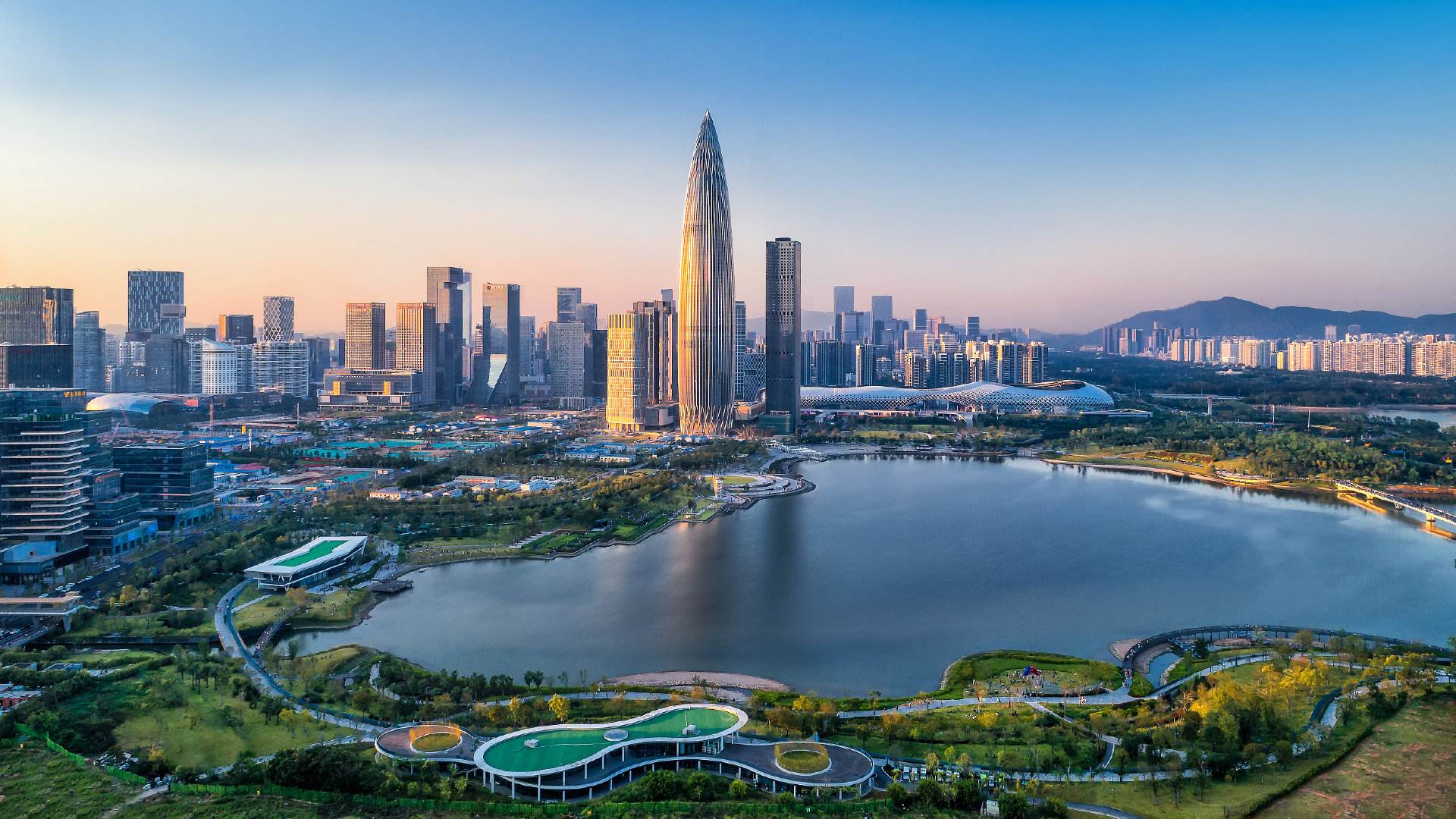
Date: June 23, 2022
Author: Guo Wanda, Executive Vice President, China Development Institute
“The development of the Guangdong-Hong Kong-Macao Greater Bay (GBA) saw progress in three major aspects,” said Guo Wanda, Executive Vice President of China Development Institute (CDI). In addition to the improvement in transportation network & institutional connectivity and the industrial clusters & innovation ability, Guo highlighted the various platforms built to boost Guangdong-Hong Kong-Macao cooperation.
“We established major cooperation platforms like Hengqin, Qianhai, Nansha and Hetao as well as special platforms in cities such as Foshan, Huizhou, Dongguan, Zhongshan, Jiangmen and Zhaoqing. These platforms have been particularly significant since the plans for Hengqin and Qianhai released last years and have the two regions to drive regional integration and development,” said Guo.
The GBA is a focal point in the report of the 12th CPC Guangdong Provincial Committee through which the Party summarized the province's performance over the past 5 years while unveiling future development blueprint. Having read the report, Guo shed insight into the government’s latest plans for the GBA, one of China’s most economically active regions, in a recent interview with GDToday.
Hengqin, Qianhai cooperation platforms proven effective
The report sets it a major goal to further reform and opening-up through the ‘synergistic effect’ generated by the development of GBA, Shenzhen as a pilot demonstration area of socialism with Chinese characteristics as well as Hengqin and Qianhai cooperation zones.
Guo elaborated the ‘synergistic effect’ means the effects on opening up to Hong Kong, Macao, to the world, and to global talents. “For example, the Hengqin and Qianhai cooperation zones have been piloting institutional reforms which allow Hong Kong and Macao professionals to provide services in the mainland much more easily. These platforms have proven effective as they facilitated regional integration and attract more foreign direct investment.”
According to a press conference on April 19, Hengqin has seen more than 4.7 thousand Macao-invested companies which have tripled over the past 2 years while 2021 has seen a 156 percent year-on-year increase of Hong Kong-invested enterprises settling down in Qianhai. As for Shenzhen, its actual use of FDI hit 11 billion USD in 2021 with a 10.2 percent of average annual growth in 2019 to 2021.
Guo highlighted Hengqin, Qianhai platforms are not only leading the integration of GBA but overflowing their effect into surrounding areas.
“Shenzhen Development and Reform Commission launched a research on joint development between Qianhai as well as Cuiheng and Binhaiwan, two cooperation platforms respectively in neighboring Zhongshan and Dongguan. The research examines the possibility of integrated development of the east bank and west bank of the Pearl River, which shows the overflow effect of the Qianhai,” said Guo.
High-tech industry, international cooperation highlighted in Nansha plan
Guo pays close attention to the overall plan for Nansha District in Guangdong's provincial capital Guangzhou to deepen comprehensive cooperation between Guangdong, Hong Kong and Macao, saying, “Nansha is positioned high as a‘major strategic platform’ for GBA integration and global cooperation.”
The Plan released by China’s State Council sets out 5 key directions for Nansha including high-level opening-up, rule-based connection mechanism, cooperation for sci-tech innovation, co-operation in youth innovation and entrepreneurship, and high-quality urban development. From 2022 to 2024, 10 billion RMB of new local government debt will be allocated to Nansha every year.
“The plan for Nansha might involve similar advantageous measures as the Plans for Hengqin and Qianhai, which makes sense considering the effective practice in the two cooperation zones. However, I would highlight Nansha has its unique industrial clusters that focus heavily on high technology,” said Guo,
According to the Nansha government, 744 high-tech enterprises and more than 620 AI and bio-tech companies have settled in the district. The auto industry is the pillar industry to drive development with an annual output of more than 154.8 billion RMB in 2021. Nansha is also one of the two districts that have given a green light to launch automatic driving on the pilot roads and areas.
“Nansha not only could be the manufacturing base for high-tech industries, but also provides an relatively open environment to apply these technologies such as unmanned vehicles, aircraft and underwater vehicles. It could facilitate the development of upstream industries such as new material and marine energy as well.”
Moreover, Guo considers Nansha’s development is highly related to the ability of technological innovation. The Hong Kong University of Science and Technology set up its Guangzhou campus in Nansha and will open in September this year while the Chinese Academy of Sciences (CAS) has landed a number of research institutes in the districts.
“When I visited Nansha, I was deeply impressed by the cold-seep seafloor ecosystem research device being built by the South China Sea Institute of Oceanology, CAS. Cold seeps are located at the sea floor where hydrocarbon-rich fluid seepage occurs. A deeper research into the cold seeps will reveal the secrets of the evolution of life on Earth, and contribute to research on energy and bio-technology,” he said excitingly.
Now that the plan positions Nansha as a strategic platform for global cooperation, Guo was invited by Nansha to research on more detailed strategies to develop the district into an international platform.
In his opinion, regulations up to international standards are fundamental to attract global players. “For example, our medical system is different from other countries. We need to press international standards on medical institutes, drug, and medical equipment manufacturers. Or if we plan to involve Hong Kong, Macao counterparts in urban development, more reform is required to recognize their different certificates and standards in the professional services sector.”
Platforms in other GBA cities have their own strengths
The report of the 12th CPC Guangdong Provincial Committee emphasizes the development of cooperation platforms in other GBA cities including Foshan, Huizhou, Dongguan, Zhongshan, Jiangmen and Zhaoqing.
Guo summarizes 4 major characteristics of the cooperation platforms in these cities. On the one hand, they emphasize the development of advanced manufacturing industries and strategic emerging industries which require a certain amount of R&D ability. On the other, they stress ecological conservation, smart city development, and the cooperation with Hong Kong and Macao.
“The Sanlongwan and Binhaiwan are respectively located in Foshan and Dongguan, the two cities with GDP exceeding 1 trillion RMB. Foshan is known for its well-developed manufacturing base while Dongguan is also a manufacturing city with rapid development in AI, bio-technology and information technology. The Cuiheng platform in Zhongshan will face enormous opportunities as the Shenzhen-Zhongshan link is schedule to open in 2024. We saw several major projects in the fields of manufacturing and energy settled in the platform in recent years,” said Guo.
He added the advantageous policies might slightly differ from platforms to platforms in terms of tax preference, rent, subsidies, and accommodation support policies. He suggested that people could make the decision considering the different geographic locations, strengths, costs, and cultures of these cities if looking to start their business or career in the GBA.
(Source: GDToday)

Author: Liu Guohong, Assistant President, Director of Department of Financial Development and State-owned Assets and State-owned Enterprise Research.
As the Omicron outbreaks slowed down production across the globe, funding options have become limited but also urgently needed for private companies. Over the last two years, financial relief policies had been delivered rapidly to those pandemic-hit cities in China. In this regard, the accumulated experiences in policy implementation could serve as the role to stabilise and stimulate the market to greater effect.
What are the Problems facing China's post-Covid financial relief policies?
Policies that are packed with low-interest rate loans in order to reach more beneficiaries will lead to increased financial risk as the return on such loans cannot cover the cost of capital. Resultantly, financial institutions will become reluctant to supply the market with more capital, thereby compromising the efficiency of the financial relief policies.
The suppressed funding needs of certain companies rise to the forefront due to the surge of overeager bankers and the sudden drop in cost of funds. Thus, these companies sign on to financing programmes without a clear business plan. The compulsive investment into rapid expansion only leads to short-lived prosperity while losses and financial risks will increase with time goes on.
At the same time, customised policies for a green economy alongside science and technology innovation, finance are not widely known among MSMEs, which as such will not be able to take advantage of the prescribed financial concessions or privileges.
How to make the financial relief policies more effective?
Financial institutions, serving as middlemen between the capital supplier and receiver, bear the responsibility of not only providing necessary funds for the receivers on the demand side but also ensuring the safety and return of the capital. If fulfilled, people will then entrust financial institutions with their savings, allowing capital to be utilised and circulated. In other words, the sustainability and value addition capability of financial products are crucial for attracting more capital to empower the real economy. Therefore, financial institutions need to vet companies and supervise the relevant funds to suitably perform their role in capital allocation and risk management.
In the current context, financial relief policies should enable financial institutions to freely price their services within the policy’s selected range. In addition, more freedom in decision-making should be given, ensuring that limited financial resources and services are allocated to the companies with higher potential.
Moreover, the customized policies for a green economy alongside science and technology innovation finance need to be further promoted. The private sector, especially the MSMEs, need to prepare and make full use of these policies which allow financial institutions to have a higher tolerance for risk in the targeted sectors. This will be supportive to the fulfilment of stable and sustainable development.
Lastly, competition and cooperation among financial institutions should be encouraged. This can be promoted by additional service licenses being provisioned to the market by financial policies. With more financial institutions entering the market, the quality and efficacy of financial services will be able to improve further whilst costs diminish. In the meantime, the diversified financial service providers and the increased competition and cooperation within the industry will facilitate sustainable economic development and promote high-quality development.
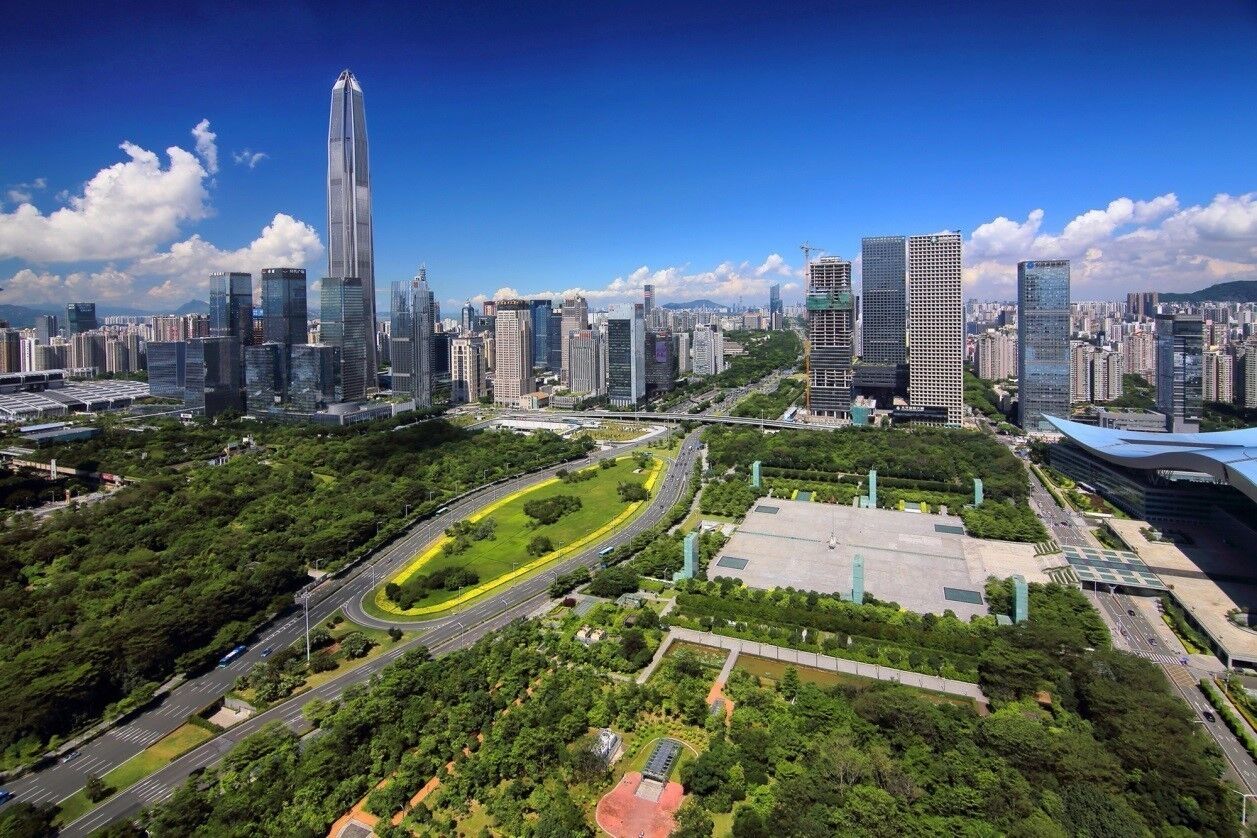
Author: Guo Wanda, Executive Vice President of CDI
Editor’s note: Shenzhen Guangming Science City, which initially covered just 10 square kilometres, now covers close to 100 sq km and has become a key centre for China’s comprehensive national science programme due to its important role in Shenzhen’s high-quality development. Dr. Guo Wanda, Executive Vice President of China Development Institute, provided some insights into Shenzhen’s high-quality development, using Guangming Science City as an example.
High-quality development implies the adoption of higher standards and tougher requirements than standard processes, which in turn warrant a transition from investment-driven to innovation-driven development. Guangming Science City exemplifies the new model of innovation-driven development, thanks to its integration of basic scientific research and applied scientific development. Such development has been advanced through the convergence of industry, innovation, investment, and policy, allowing the construction of modern industrial systems, the reform of older systems and mechanisms, and the construction of open and inclusive innovation methods.
High-quality development also requires new development phases, new development values, and new development patterns:
- Four decades after its “reform and opening-up”, China has transitioned from a traditional production factor intensive economy to a knowledge and science-based production factor intensive development phase.
- The main development value is now the idea of being people-centred, in a population that aspires to live better, higher quality lives.
- In addition, high-quality development is a prerequisite for smooth “internal and external dual circulation” – the new development pattern that was recently proposed by the central government.
The following four types of dynamics have been critical to Shenzhen’s dedication to high-quality development; they may thus also serve as lessons and inspirations for the rest of the country:
- The dynamics between the government and the market.
The market is the main driver of growth, which makes it important to let the market play its pivotal role of resource allocation effectively. The government can, however, achieve systemic innovation to better serve as a facilitator of technological innovation, with the former being the precursor of the latter.
- The dynamics between basic science research and industrial innovation.
Guangming Science City offers an example of basic science research, which requires government investment and guidance, propelling industrial development by means of research applications developed through interaction and collaboration among large-scale science facilities, universities, R&D institutions, and top-tier private companies.
- The dynamics between “opening-up” and independent research.
Key technologies cannot be given or bought, instead needing to be developed through independent research; however, this does not mean working behind closed doors, but instead adhering to the principals of opening-up by attracting world-leading scientists and researchers.
- The dynamics between talent and innovation.
Innovation and development both require human resources. A welcoming working environment equipped with proper resources and incentives will attract and retain the appropriate talent, as well as allowing the maximisation of their creativity and innovation to achieve the organic integration of talent, innovation, and industry.
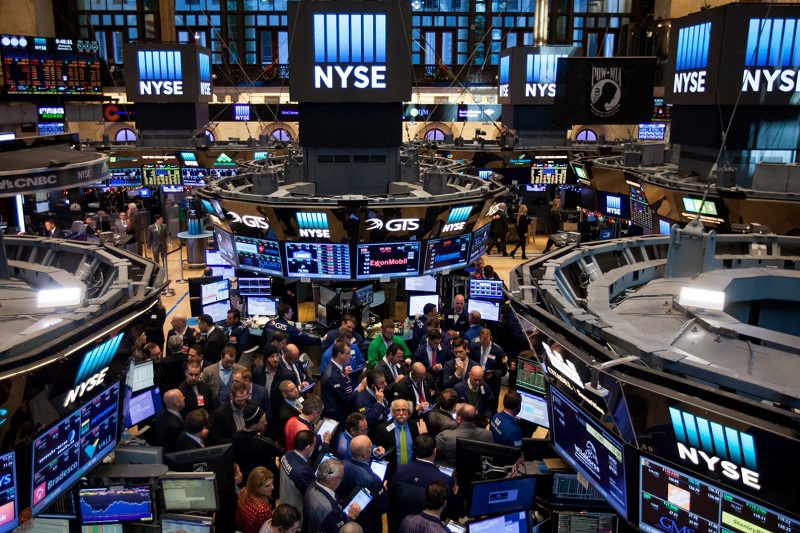
Author: Xiao Geng, Chairman of the Hong Kong Institution for International Finance, and Professor of Peking University HSBC Business School
Editor’s note: During the launch of Global Financial Centres Index 29 on March 17, 2021, Professor Xiao Geng spoke about the global financial scene and the financial connections within the Guangdong-Hong Kong-Macao Greater Bay Area (GBA).
On the greatest opportunities and challenges facing the global economy and finance in 2021
2020 was an extremely tough year for both China and the United States. China withstood the test of the pandemic and the US-Sino trade conflict, while the United States also went through the pandemic as well as election chaos and social problems induced by political division. If the social, economic, and financial conditions of either of these two countries continue to deteriorate, it will be detrimental to both the global economy and to global finance.
In the next few months, China and the United States will continue to negotiate. Competition is inevitable between the two countries, but the confrontation needs to be managed and controlled. Meanwhile, the two nations should continue to cooperate on dealing with climate change and the COVID-19 pandemic, as well as regional and global governance issues. Professor Xiao believes that the biggest challenge of 2021 willbe to explore new, more complex, and more pragmatic ways for the super-powers to cooperate, compete and coexist. He also believes this will be the new normal and the basis for the future world’s peace and prosperity.
On how the global economic and financial risk structure has shifted
The monetary policy of United States is widely thought to be irresponsible, including the fiscal expansion policy supported by zero interest rates and printingmoney. Professor Xiao proposes that there are two sides to this story. This policy has given the U.S. economic and social stability, which has benefitedboth the U.S. and the rest of the world. However, it also causes significant uncertainty for the U.S. financial market, as well as the global financial market, as the value of assets theoretically cannot be determined with zero interest rates. Asian countries in particular should be prepared as they will be on the forefront of any global financial market turbulence, because theyhave the most foreign exchange reserves and their currencies are closely linked to the U.S. dollar.
On how inflation expectations will be influenced
Regarding inflation expectations, it is important to distinguish between asset price and consumer price. The consumer price index (CPI) is expected to be controllable in 2021, partly because of China’s great impact on the price of products manufactured globally. Compared to other countries, China’s supply capacity is less affected by the pandemic and has even been improvedvia supply-side structural reforms. China thus has a defining effect on the price of global manufacturing products.
Furthermore, the CPI may not necessarily reflect inflation expectations. Inflation is mainly reflected by the revaluation of assets. China’s net wealth has increased much faster than its GDP growth over the past few yearsbecause China’s marketization has led to asset and exchange rate appreciation. This trend is in line with economic laws. However, it should be noted that some assets have not increased in value.The market decides the value of an asset. The valuation of some high-quality assets thus rose while other fell, including the valuationsof real estate and stocks. The funds released by COVID-19stimulus and relief measures were more likely to flow to high-quality assets. High-quality assets around the world have therefore been revalued, including those in the United States and China. It is therefore important to have a clear understanding of the market, and to revalue the assets in conformity with market trends.
On the development of GBA financial ecosystem
It is important to move quickly to explore how Hong Kong’s mature offshore financial system and the overall ecosystem can be extended to GBA, as this is a time-sensitive issue. This innovative approach, based on the “one country two systems” principle, will allow Hong Kong’s primary financial institutes and enterprises to operate under local supervision using Hong Kong’s common law and currency within the GBA trial zones. It will also be instrumental to overcome the protection towards industries and monopoly seen in Hong Kong, as well asto make up for its limited physical space and market. Further research is thus required into the connectionbetween Hong Kong and Shenzhen markets with the goal of building a unified market in the GBA.
Professor Xiao suggests that, as the conduit of “internal circulation” and “external circulation”, Hong Kong’s strength in market and economic openness should be combined with the GBA’s advantages in market scale, production resources and its local government’s ability to coordinate resources and centralize execution. Although Shenzhen and Hong Kong compete with each other as financial centres, the two are within the same financial cluster equipped with two distinct functions – offshore and onshore. Both functions require a unified and interconnected market so that maximum efficiency of fund, talent and land usage can be achieved. Nevertheless, offshore and onshore functions need to be separated to avoid any financial or systemic impact that the two cities could have on each other. Professor Xiao argues that this is now indeedfeasible with existing financial supervision technology.


